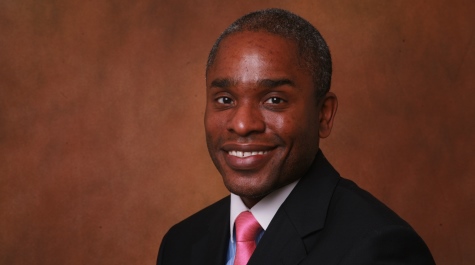Donnor’s book examines the resegregation of schools
 Although the landmark Brown v. Board decision legally desegregated schools, many in America still experience segregation in education, according to William & Mary Assistant Professor Jamel Donnor.
Although the landmark Brown v. Board decision legally desegregated schools, many in America still experience segregation in education, according to William & Mary Assistant Professor Jamel Donnor.
“There aren’t necessarily black schools and white schools in the traditional sense that we understood it vis-à-vis Jim Crow, but there’s still marginalization and inequality that goes on within schools according to race,” he said. “And now, it’s also ability, gender, sexual orientation – things of that sort.”
Donnor, who teaches in the W&M School of Education, recently co-edited a book on the topic, The Resegregation of Schools: Education and Race in the Twenty-First Century, with Adrienne Dixson, an associate professor at the University of Illinois. Published in 2013 by Routledge, the book includes chapters on topics ranging from curriculum revision for African Americans to state efforts to limit K-12 education for immigrants.
Although Brown v. Board often comes to mind when thinking about segregation in education, the idea for the book actually grew out of another, more recent Supreme Court decision on segregation and education. In 2007’s Parents Involved in Community Schools v. Seattle School District No. 1, the court ruled against the city of Seattle voluntarily integrating its public schools, “saying that it hampered families’ choices in terms of where they could send their children,” said Donnor. “It was an irony because the high Court used the Brown v. Board decision of 1954 to justify striking down integration in this particular case.”
“It was fascinating. Myself and my coeditor knew that there something more to this story, and we needed to make sense of this, and bring in other people to help us make sense of this as well.”
Some current forms of segregation in schools include the over-representation of African-American students in special education and the limiting of educational access to the immigrant Latino population, Donnor said.
"When you start to peel back the layers, you see what is really going on here, and one of the things that you find is that there’s this undercurrent of racism that’s there but really doesn’t get spoken about in the explicit ways that we talk about segregation and racism back in the Jim Crow era,” he said. “It’s very, subtle, very tacit.”
In addition to longstanding cultural perceptions, another reason that segregation still occurs in schools is “just straight opportunity hoarding,” said Donnor.
“Again, when you start thinking about money and access, people get really protective, get really defensive, and they get myopic in terms of only seeing themselves or their immediate family members and not thinking about the broader good, the greater good,” he said. “We all have a stake in this. It’s not just what your child does but the person next to him or her.”
Ensuring access to quality education is not only important for individuals in terms of their upward mobility and overall quality of life, but it is also vital to the larger community, Donnor said.
“This affects all of us. We can pay and ensure that people have access to a good, quality education on the front end, or we pay for it on the back end in terms of lost human capital and tax revenue, increased funding for the criminal justice system, lack of civic involvement and civic participation as well as an increase in social services, so I think we all have a stake in this,” he said.
Learning in a diverse community is also an important educational experience for students as they prepare to live in an increasingly diverse society, said Donnor.
“So we need to learn to work with one another, particularly people who don’t necessarily look like us and may not ascribe to the same beliefs and things of that sort, but you know, still try to find some common ground.”
Donnor notes that progress has been made since Brown v. Board, but “we have to look at why some groups continue to not advance given where we are today,” he said.
And the first step to fixing the problem is simply letting people know about it.
“There are answers, and I think the biggest response is to just raise awareness and get buy-in in terms of, look, we all lose out [if this isn’t addressed].”
Although the book is aimed at scholars and researchers, Donnor hopes that it might also be read by parents and community members so that they know “that they aren’t necessarily going through this alone.”
“Particularly those underserved communities, underserved populations where they are able to tap in and see, OK, hey, there are people who are studying my issues, my concerns, but then also there are solutions or there are ways to reconcile these issues that might be going on.”